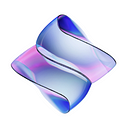Build customized app-specific oracle feeds for any use case on day one with SEDA.
In the SEDA Edu Series Blog #1, we highlighted SEDA’s programmability as a key differentiator compared to traditional oracle models, where traditional models dictate what and when data is available, SEDA gives developers tools to define what data, from where, and how they want it returned.
The secret behind SEDA’s unprecedented programmability lies in Oracle Programs (OPs), which are modules tailored to each network’s specifications. OPs allow developers to create custom Oracle feeds for unique applications rather than fitting applications to existing data feeds, fuelling limitless onchain development.
Article Overview
- What Are Oracle Programs
- How do Oracle Programs Work
- OP Examples In The Wild
What Are Oracle Programs?
OPs are protocols with predefined instructions that tell the SEDA network how they want their data requests to be managed. It’s much like going to a smoothie bar with 100s of ingredients, toppings, and glassware. Unlike a traditional cafe that stipulates the few juices available, SEDA, as a smoothie bar, lets users choose from any combination of ingredients, add-ons, and how they are presented on the table.
OPs are unique to SEDA in separating “Programmable Oracles” from traditional oracles like Chainlink. An OP contains three parameters:
- What data is needed.
- Where data should be sourced.
- How data should be returned.
Using a common Chain Abstraction example, a network can build an Oracle Program that tells SEDA which transaction data they need, from what blockchains they want the data to be sourced, and to return the data with the completion time in order from oldest to newest. SEDA then calls on the protocol’s instructions every time a network issues its request.
With OP freedom, app development becomes limitless, with traditional oracle barriers of what can be accessed, transported, and configured completely removed.
How Do Oracle Programs Work?
OPs are stored as WASM binaries (Modules native to the Cosmos Ecosystem). Imagine being a regular customer at the smoothie bar, where the workers have your favorite smoothie order instructions stored in the kitchen, waiting for your arrival.
An OP has an ID attached that is fetched when an incoming data request ID matches. The OP instructions are then read by the nodes that query data sources to collect the correct data from where. When data is brought onto the SEDA network, a filtration system reads the instructions to organize data as requested.
Like a busy restaurant, a waiter takes your order and sends it to the bar staff and chefs, and each party follows the order relevant to their section. With SEDA, data requesters stay at their table (network) and let the SEDA waiters (network) manage their orders with OPs.
OP Examples In The Wild
SEDA is currently live with Oracle Programs, which are being built on Berachain, Ink, Unichain, WeaveVM, Plume, SeiNetwork, Aribitrum, and Flow.
App chains Unichain & Ink, recently integrated SEDA to bring app-specific oracles to their builders. Application-specific chains are optimized to a particular use case, such as DeFi, and as such, require programmable tooling that can be optimized to suit builders’ use cases. Ink & Unichain are leading the next chapter of the DeFi Renaissance and are equipped with the tools needed to power the next great application experiences. Having SEDA on both application-specific networks enables the builders to ship Oracle Programs that access the specific data they need to power limitless app experiences.
Recent applications built in the Chain Abstraction Hackathon by Encode Club on SEDA included the first AI Oracle Programs by Artemis AI. These AI Programs allow users on the Artemis AI platform to trigger smart contract interactions with GPT-4s to bring AI prompts onchain as NFTs. Other application ideas saw fractionalized farming ownership where SEDA was used to bring land price data onchain allowing users to buy portions of real land represented by tokens.
The first Oracle Programs have showcased not necessarily what SEDA is building that is powerful but what users can do with it. To explore more
Build limitless with SEDA Oracle Programs.
https://docs.seda.xyz/home/overview/seda-technical-guides-and-documentation
